If there’s anything I’ve learned about sustainability or zero-waste adventures, it’s that processes like these take time to achieve, and it’s more about what you can realistically do rather than being perfect. I am far from where I want to be in my journey to have both my on-trail life and off-trail life more sustainable. However, I have slowly been making changes to have less of an impact on the planet and I want to share what I have learned so far.
With climate change always looming as well as both the National Park Service and U.S. Forest Service resources being heavily affected by the Trump Administration’s decisions, it matters now more than ever that we as outdoor users try to give back to natural spaces as much as we can. Although the principles of Leave No Trace are vastly important to follow, efforts need to go beyond that. It’s worth addressing that, systemically, a lot needs to be done to prevent further environmental damage and large manufacturing corporations are mostly to blame. Despite this, as individuals, we must get creative and do our best to help on a consumer level as well.
What can we do?
The first step I made when trying to make my backpacking setup more sustainable and eco-friendly was to focus on limiting my consumption. Naturally, when you start getting into hiking and backpacking or really any new outdoor sport, it’s easy to go a little crazy with buying the equipment you need to have a fun time in nature. First, it’s a day pack, then it’s a nice rain jacket, and then you purchase a good pair of boots. This all eventually snowballs into tents, more packs, more clothes, sleeping bags, and everything else needed to spend the night outside in all types of weather. I was guilty of this.
In all honesty, this part of the process is essential if you want to design a setup that makes you happy and will help you do everything you want to do in the backcountry. However, there are ways to make this step more sustainable and environmentally friendly. If at all possible, search for used gear. Instead of running to REI or any other outdoor retailer, first consult places like Facebook Marketplace and Geartrade. It may take more tenacity to find the specific item you are looking for that has been used, but it’s worth it in the end if you can purchase it directly from a previous owner.
Backpacking Flea Market Groups on Facebook: This is a fantastic resource as you can find a plethora of gear options up for sale from actual people instead of from a store. Most of the time, these items are lightly used or new and are also heavily marked down from their original price. Not only are these groups great for buying gear, but they are amazing for selling gear you no longer use as well. Why not give your gear a second life AND get money for it too?
Websites like Geartrade or Poshmark: Resources like these are another good option to consult when looking for used gear items. Geartrade in particular prioritizes many different types of outdoor products that are lightly used, in good condition, and also heavily discounted. I have yet to buy items from them, but I have sent them some of my old gear that I wanted to sell and they made the entire process extremely easy. Like Facebook Marketplace, Poshmark deals directly with individual sellers and isn’t specifically outdoor-focused, but still offers a lot of clothing and footwear brands. I recently bought an incredibly cheap pair of used Altra road runners and could not be happier with this decision.
Fix, Repair, and Mend
Longevity is the name of the game. The second step I made to help build a more eco-friendly backpacking setup was to NOT buy anything if I didn’t absolutely need to. Instead, if a gear item broke or ripped, I opted to learn how to repair it rather than immediately start looking for a replacement. As you use gear, it will show wear and tear just as anything in the world would. To ensure that our gear has a full, long life, it’s important that we do our best to fix what is fractured so that we can keep unnecessary waste out of landfills.
Understandably so, sometimes things are out of our control and gear will break beyond repair. In these cases, we either can improvise or replace them responsibly by either buying used or supporting small outdoor retailers. A few years ago, my dogs ended up shredding the hip belt on my Gossamer Gear G4-20 after I accidentally left some snacks in the pockets. At first, I was crushed because I really didn’t want to dish out $300 on a new pack. After trying to fix it myself with duct tape and other materials that didn’t work, I eventually found myself browsing around on Gossamer Gear’s website. Luckily, they actually had a solution for an issue like this. They sell replacement parts for their packs, so I was able to buy new pockets for the hip belt instead. How cool is that?!
What about consumables?
When hiking and backpacking, it’s a no-brainer that you have to sustain yourself somehow while on trail to fuel your adventures. Just like in off-trail life, you will accumulate trash rather quickly as you inhale Clifbars and that big Mountain House chili mac dehydrated meal at the end of a long day. This is perfectly delicious, except the single-use plastics can add up fast. To make some adjustments for the sake of sustainability, it’s important to get used to reusable items that can help create a less wasteful setup.
Helpful tips
Reusable snack bags are your friend! For the past several backpacking trips, I have cut out using Zip-lock baggies for the meals and snacks that I bring. To replace them, I bought small, lightweight reusable bags that I use for both mine and Honey’s food. Overall, it was an easy, cost-effective switch.
Buy in bulk and craft your own meals! I have mentioned before how I love putting together my backpacking foods at home instead of buying dehydrated meals from stores because it’s fun and less expensive. However, this method also limits some waste since you can create more meals with fewer materials involved.
Try adding more vegan meals! In the long run, eating plant-based foods can be helpful for the environment since cutting out meat and dairy reduces the amount of methane produced. Resources like Outdoor Herbivore have been a game changer for me as I learned how to fuel my body well while eating primarily vegan on the trail. Nuts.com is also great as well for providing a plethora of vegan items that can be purchased in bulk and that are backpacker-friendly.
Use a better alternative to SmartWater bottles! At this point, most hikers know that plastic SmartWater bottles are a must-have item for anyone’s backpacking setup. They are lightweight, durable, and most importantly, they fit a Sawyer Squeeze filter like a glove. However, they aren’t a great zero-waste choice since after a long hiking trip, they wear out and have to be thrown away. Up until recently, I didn’t think there was a better alternative until I discovered Mazama’s M!GO bottle that was just released for pre-orders. In conjunction with content creator Miranda Webster (from Miranda Goes Outside!), the M!GO seems like the perfect alternative to SmartWater bottles as it’s lightweight, easy to clean, fits a Sawyer filter, and is definitely reusable. The M!GO sold out for pre-orders fast and will be sent to buyers sometime in April. I’m excited to try it out!
What I want to improve
While I have made some major improvements to have my backpacking setup be more sustainable, there are certainly more adjustments I want to make. As someone who used to work in a gear shop where the discount was nice and buying the latest Patagonia jacket was commonplace, it has been difficult to shift into a less consumeristic mindset. That, and living in a capitalistic society that pushes a lot of materialism, each year, it’s been harder and harder to feel content with what I have without wanting to buy something else. Without pressuring myself to make changes fast, here is a list of things I want to improve over time.
Cut out more single-use plastics: I have been great about using reusable snack bags instead of Zip-locks for my meals, but I want to take it a step further. Because they are lightweight and small, I utilize packets of coffee, olive oil, hot sauce, peanut butter, and other condiments regularly while backpacking. However, if I could find a small, lightweight reusable container, I could use that instead and just refill it with food I already have at home. I also eat a lot of bars and trail mix while hiking. Each of these items has its own wrapper which definitely adds up eventually. As someone who loves to cook, I want to look into making my own bars and trail mix from bulk purchases at the grocery store.
Clean and take care of my gear well: While I already try to treat my gear with respect and opt to repair it when needed instead of replacing items, I could do more to prioritize its longevity. After trips, it’s typical for me to get tired and absent-minded about unpacking my pack. I have let mold grow in the seams of a previous tent because I didn’t dry it out properly. I have also left my gear out where my dog can easily get to it and rip things up. Things like this are preventable, if I regularly wash, clean, and store my gear well with care each time I get back from a trip.
Prioritize the experience over the materials needed: This is more of a mindset shift rather than something practical, but I think it’s still important. As I head on different hiking and outdoor-related trips this year, it would be nice to place more emphasis on the experiences that I have instead of what gear I need to acquire to make it awesome. The items I use only help me get to where I need to be. I don’t need the most optimal gear to have the best time.
Thanks for reading!
See you out on the trail!




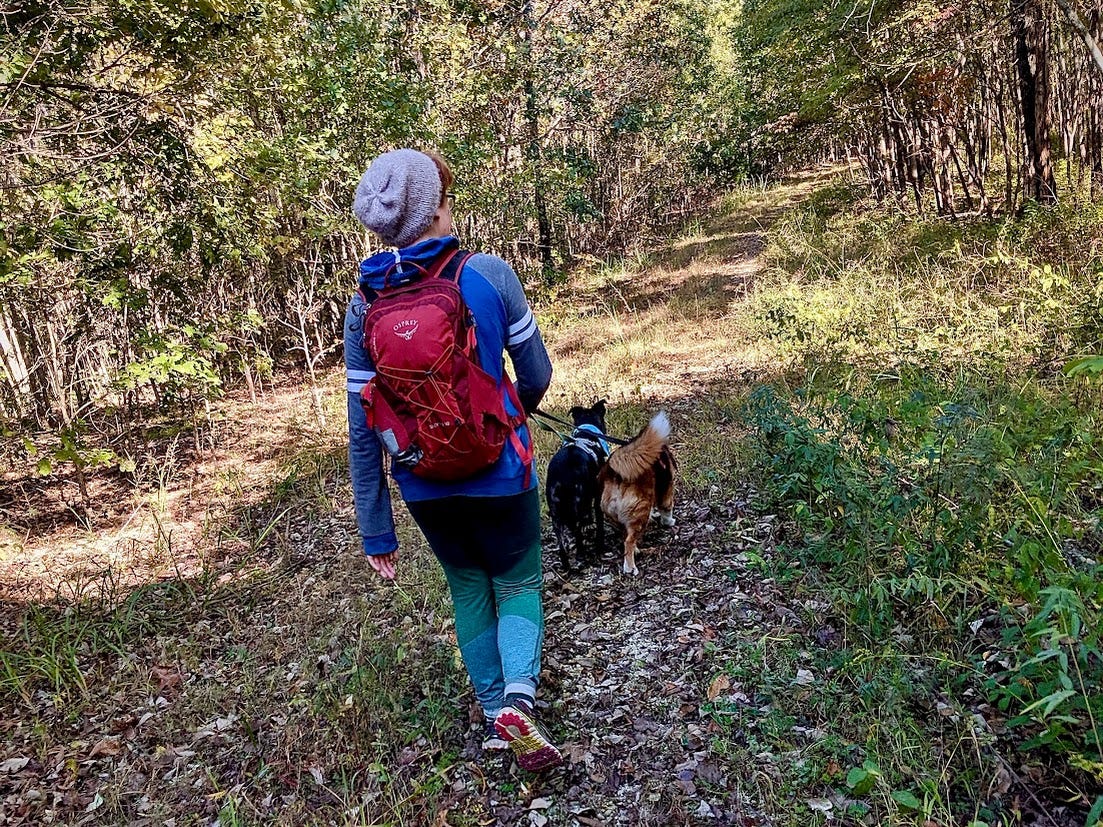
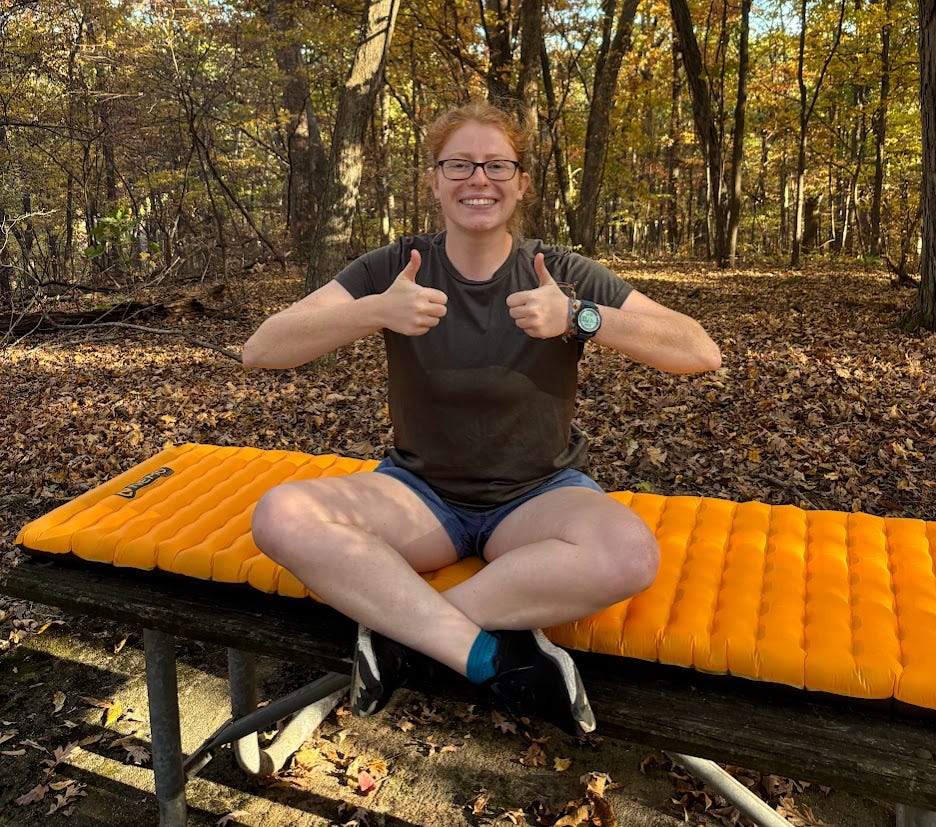

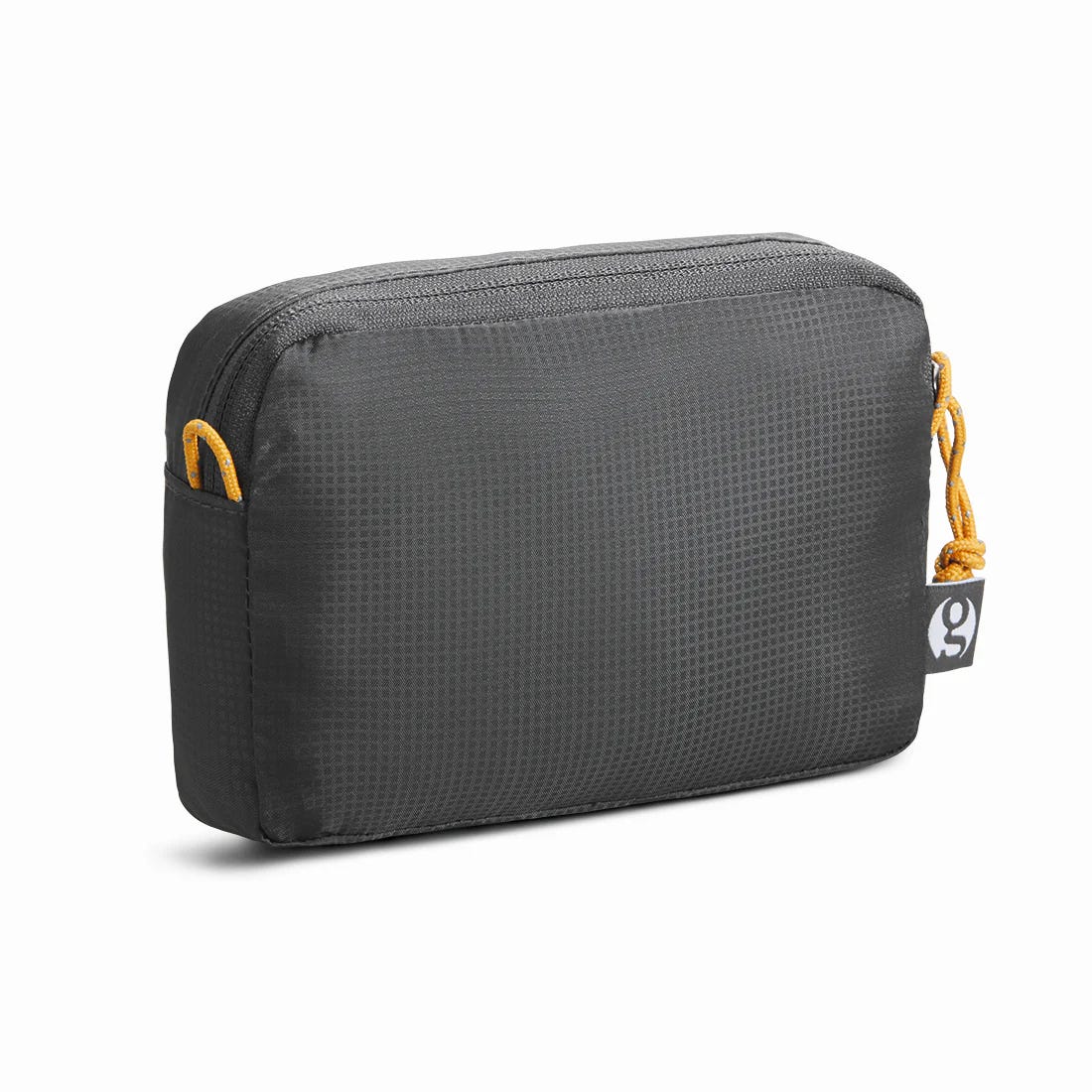

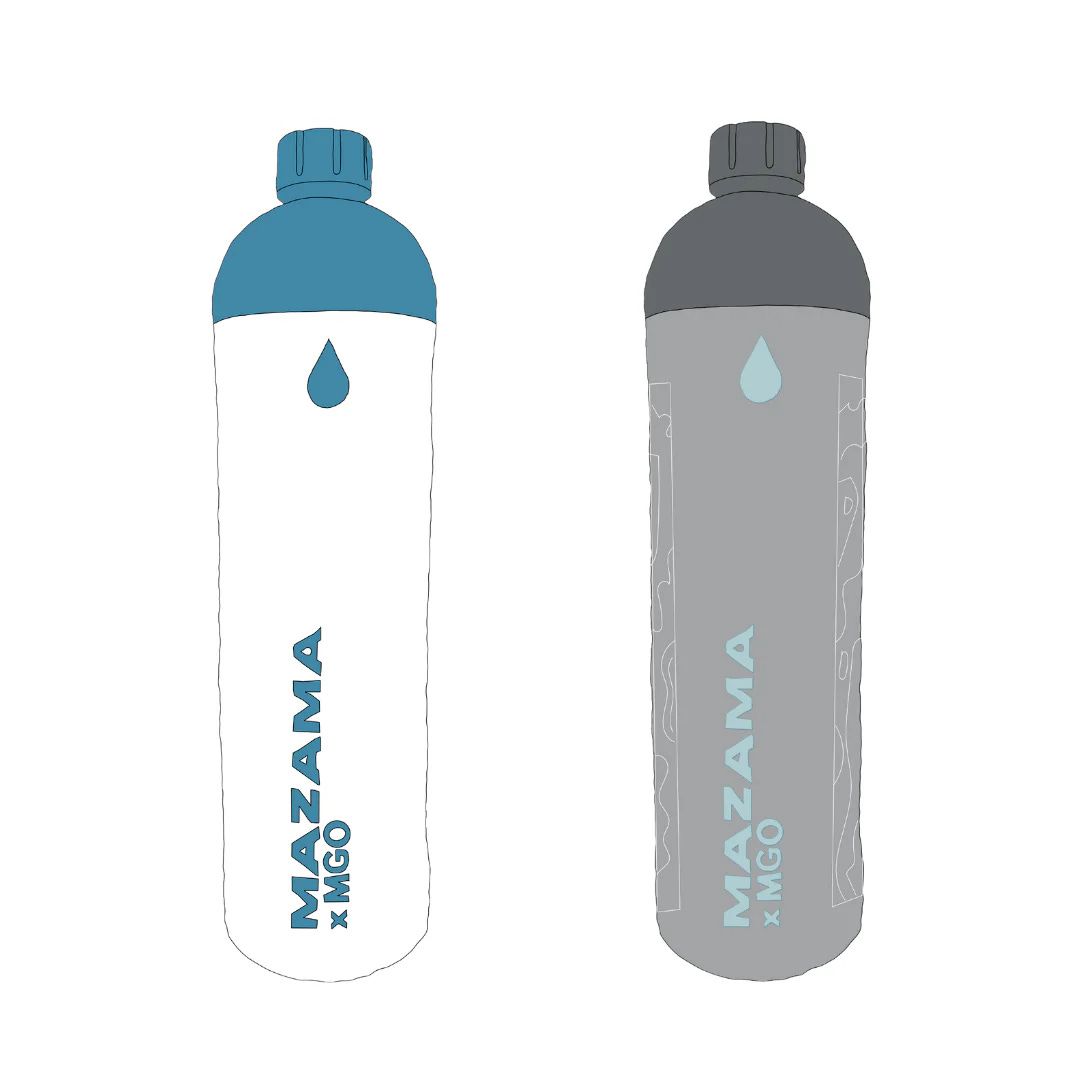
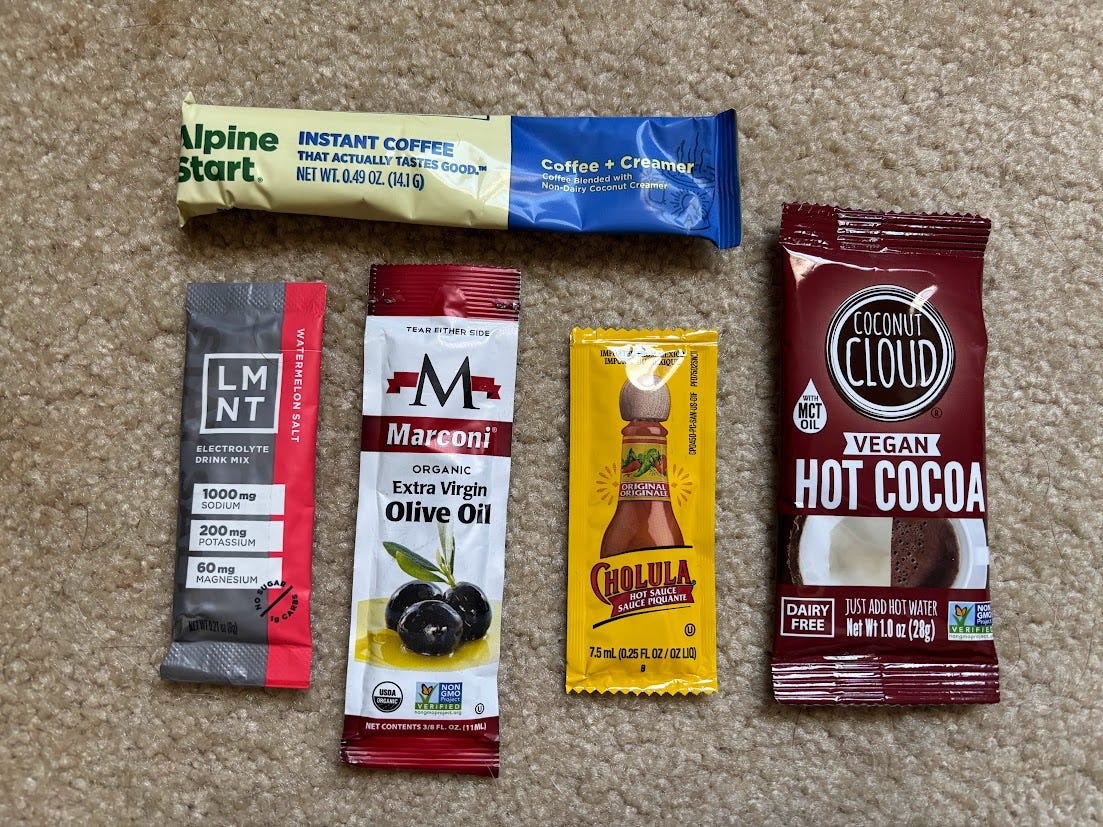
Some great ideas here. Thanks Callie!